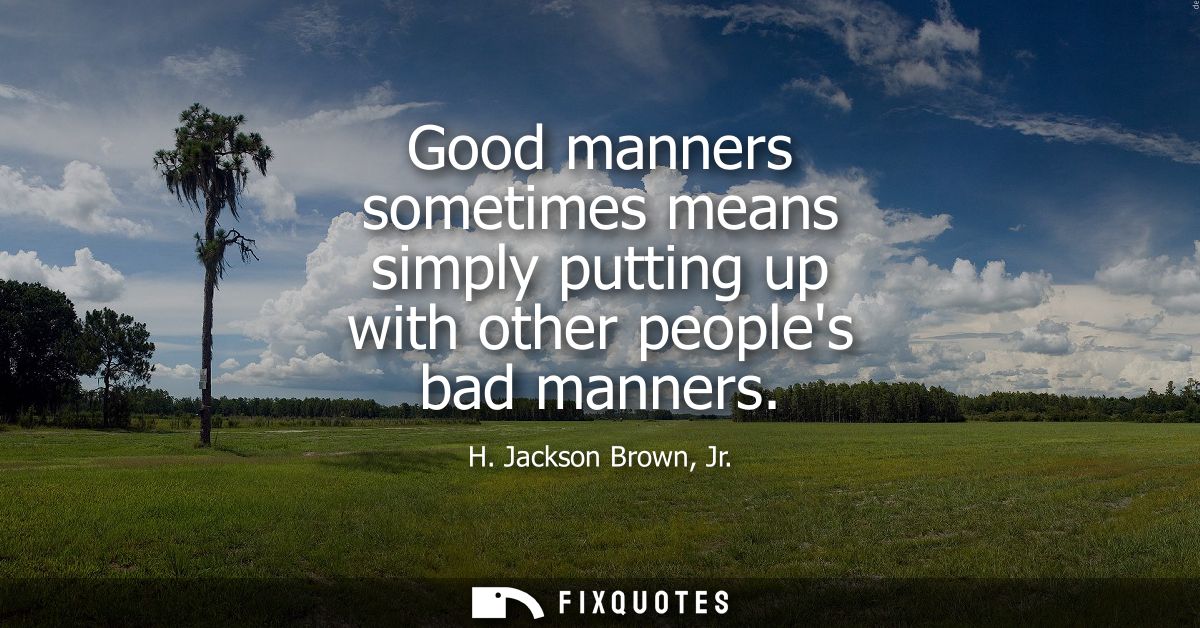"Good manners sometimes means simply putting up with other people's bad manners"
About this Quote
Navigating social interactions often requires a considerable degree of patience and self-control. Behaving with politeness isn't solely about saying "please" and "thank you" or following etiquette rules. At its core, good manners involve a fundamental respect for those around us, even when they fail to meet the same standards. The true test of civility arises not when everyone is courteous, but when we encounter rudeness, inconsiderate actions, or abrasive words.
Meeting incivility with more negativity can quickly spiral into conflict, damaging relationships and fostering hostility. Yet, responding with grace, maintaining composure, and choosing to overlook minor offenses exemplifies the real strength behind good manners. It reflects maturity, an understanding that everyone occasionally falters, and that the world is made up of diverse temperaments and backgrounds. Often, people act out of stress, distraction, or a simple lack of awareness, rather than true malice. Recognizing this can help us put others’ faults into perspective.
Letting go of the need to correct every breach of decorum can also be an act of kindness and humility. It acknowledges our own imperfections. By tolerating a neighbor’s loud phone conversation or a colleague’s forgetfulness, we contribute to a more harmonious environment. This form of forbearance doesn’t mean accepting serious disrespect or abuse, but rather understanding that minor irritations are part of shared social life.
Ultimately, patience in the face of discourtesy is an overlooked but essential element of good manners. It demonstrates empathy and emotional intelligence, showing an ability to rise above petty annoyances. By practicing tolerance, we set an example, inspiring others to do the same. Small acts of forgiveness and understanding help create a more pleasant world, where kindness can flourish even in the presence of occasional lapses. Such composure is not a weakness, but a mark of true character.
More details
About the Author

